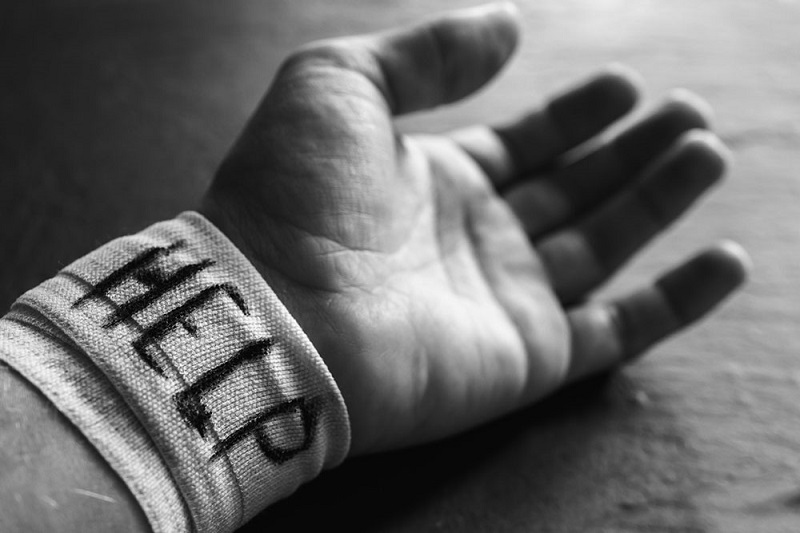
The latest images of drug addiction have unsettled the valley prompting experts to call for the renewed awareness campaign.
A top health official recently rattled Kashmir with images of scar-dotted arm and leg of two drug addicts. The pictures posted on twitter on December 3, 2022 made the valley’s drug menace even more harrowing in depth and detail.
“Please protect yourself and your families from the epidemic of drug abuse,” appealed Dr. Salim Khan, the head of the Department Community Medicine, Government Medical College (GMC), Srinagar.
It was for the first time that people saw such scary pictures of the drug addicts. The general perception is that the substance abuse only damages the internal organs.
Both the patients—one male and other female—are in their late 30’s and were brought to Institute of Mental Health and Neuroscience (IMHANS) in the year 2021. The duo had taken injectable heroin for over two years, doctors said.
They were under rehabilitation at the IMHANS and were shifted to the dermatology department of the SMHS for skin problems.
“One of them was hepatitis negative while another was positive,” said Dr. Aaqib Aslam Shah, Registrar Dermatology Government Medical College (GMC) Srinagar. “We did serology and healed their active skin ulcers with high-dose of antibiotics. We later treated them for scars.”
The harrowing condition is known as skin popping. It’s caused by a method of injecting illicit drugs, especially cocaine and opiates, directly into the skin with the goal of achieving highest satisfaction.
“Initially,” Dr. Shah continued, “the drug addicts take the substance orally but when they don’t get the desired satisfaction, they inject the drugs into their veins. But after some time when the veins get blocked, they inject the drugs into their skin and because of contamination, the skin gets infected. It leads to scars and ulcers.”
Dr. Shah who treated both the patients told Kashmir Observer that the duo’s legs and other body parts were severely involved.
“But they weren’t alone facing that torment,” Dr. Shah said. “Due to substance abuse, there are thousands of drug addicts in the valley that had become victims of skin popping.”
Earlier, Dr. Shah had carried out a study titled, “Prevalence and pattern of dermatological manifestations among substance users across Kashmir in north India” which revealed that “dermatological manifestations” are quite prevalent among substance users of the valley.
The study noted that Pruritus or itching was found to be the most common dermatological manifestation overall and statistically significant among heroin users.
The study included a total of 710 cases with 657 males (92.5 per cent) and 53 females (7.5 per cent). The male/female ratio was 12.4:1. The mean age of patients was 25 years.
According to the study, over 439 patients among 710 cases were infected with Pruritus, while 244 young patients were infected with oral problems—periodontal disease, thrush, stomatitis nicotinica, black hairy tongue.
The study, which Dr Shah carried along with Dr. Shagufta Rather and Dr. Iffat Hassan (HOD Dermatology) under the guidance of Dr. Arshad Hussain, professor at IMHANS, further revealed that 213 substance-abuse patients were found to be infected with Hyperhidrosis, 203 patients had stigmata of injectable drug use (track marks and sooting tattoos), 125 had acne vulgaris. Hesitation cuts were found in 116 patients, while facial hypermelanosis with Periorbital darkening were found in 89 patients. Plus, 69 patients were infected with skin popping scars.
The study was a cross-sectional research and was carried out for a period of 18 months. The samples were taken from patients of all age groups and gender, admitted at various drug de-addiction centres (DDC) from multiple districts within Kashmir valley.
The study further noted that the recognition of such “cutaneous signs” is important in these cases for more effective diagnosis and treatment. Creating awareness regarding such manifestations and their probable association with substance use is also imperative.
“The pattern of substance use has seen a shift toward opioid use being highly prevalent in Kashmir Valley with heroin being most commonly abused among them compared to cannabis, being the most common substance used in the past,” the study noted.
The most common substance used by study cases was heroin (515) followed by cannabis (334).
It noted that the oral involvement was fairly common in heroin users where the mode of administration was smoking. “Tooth decay and periodontal disease could be seen in many of these heroin users (19 per cent),” the study says. “30.7 per cent of injectable heroin users ended up with the presence of skin popping scars.”
It further observed that 18.8 per cent of injectable drug users had active skin ulcerations and skin and soft tissue infections.
Follow this link to join our WhatsApp group: Join Now
Be Part of Quality Journalism |
Quality journalism takes a lot of time, money and hard work to produce and despite all the hardships we still do it. Our reporters and editors are working overtime in Kashmir and beyond to cover what you care about, break big stories, and expose injustices that can change lives. Today more people are reading Kashmir Observer than ever, but only a handful are paying while advertising revenues are falling fast. |
| ACT NOW |
| MONTHLY | Rs 100 | |
| YEARLY | Rs 1000 | |
| LIFETIME | Rs 10000 | |













